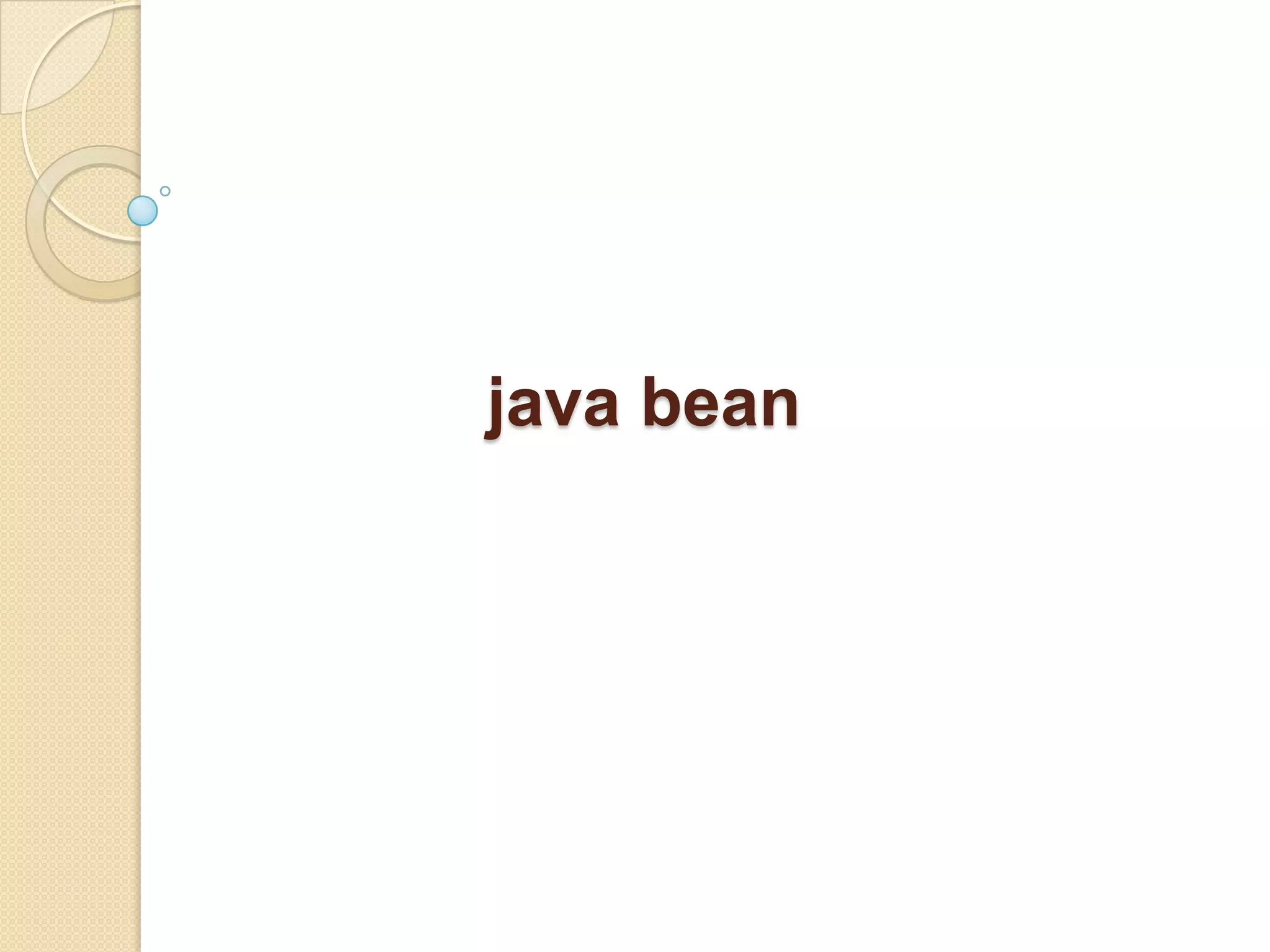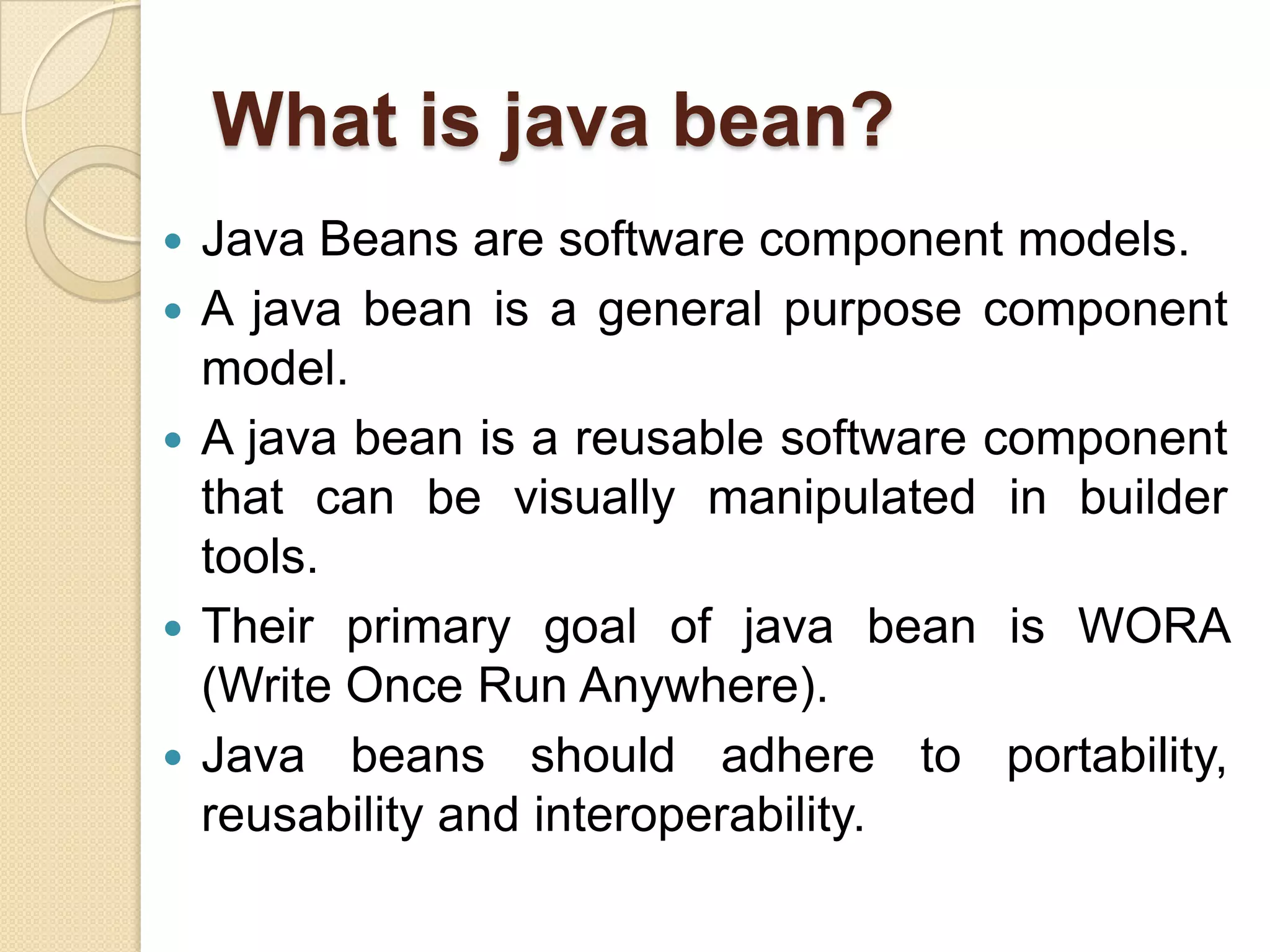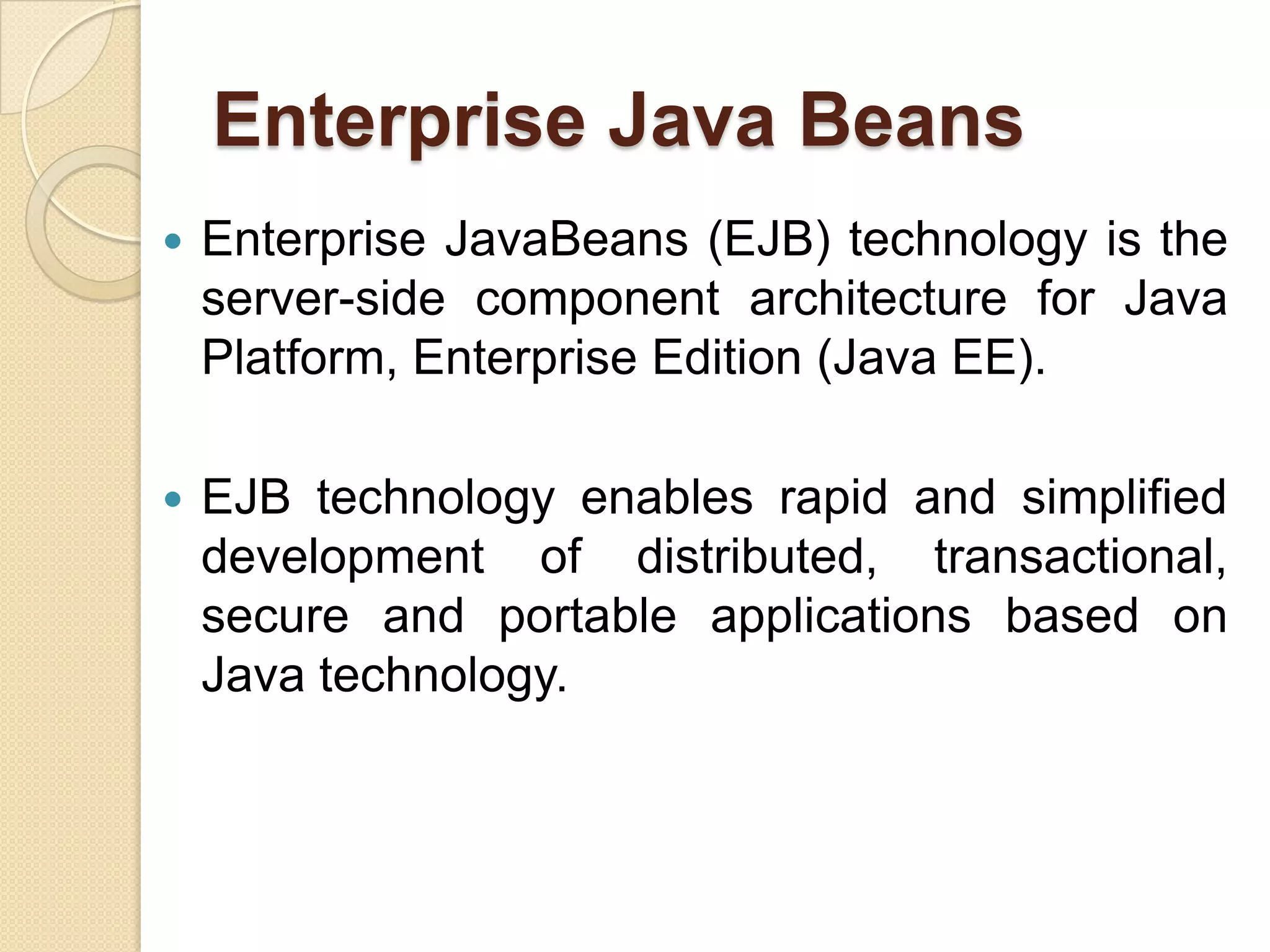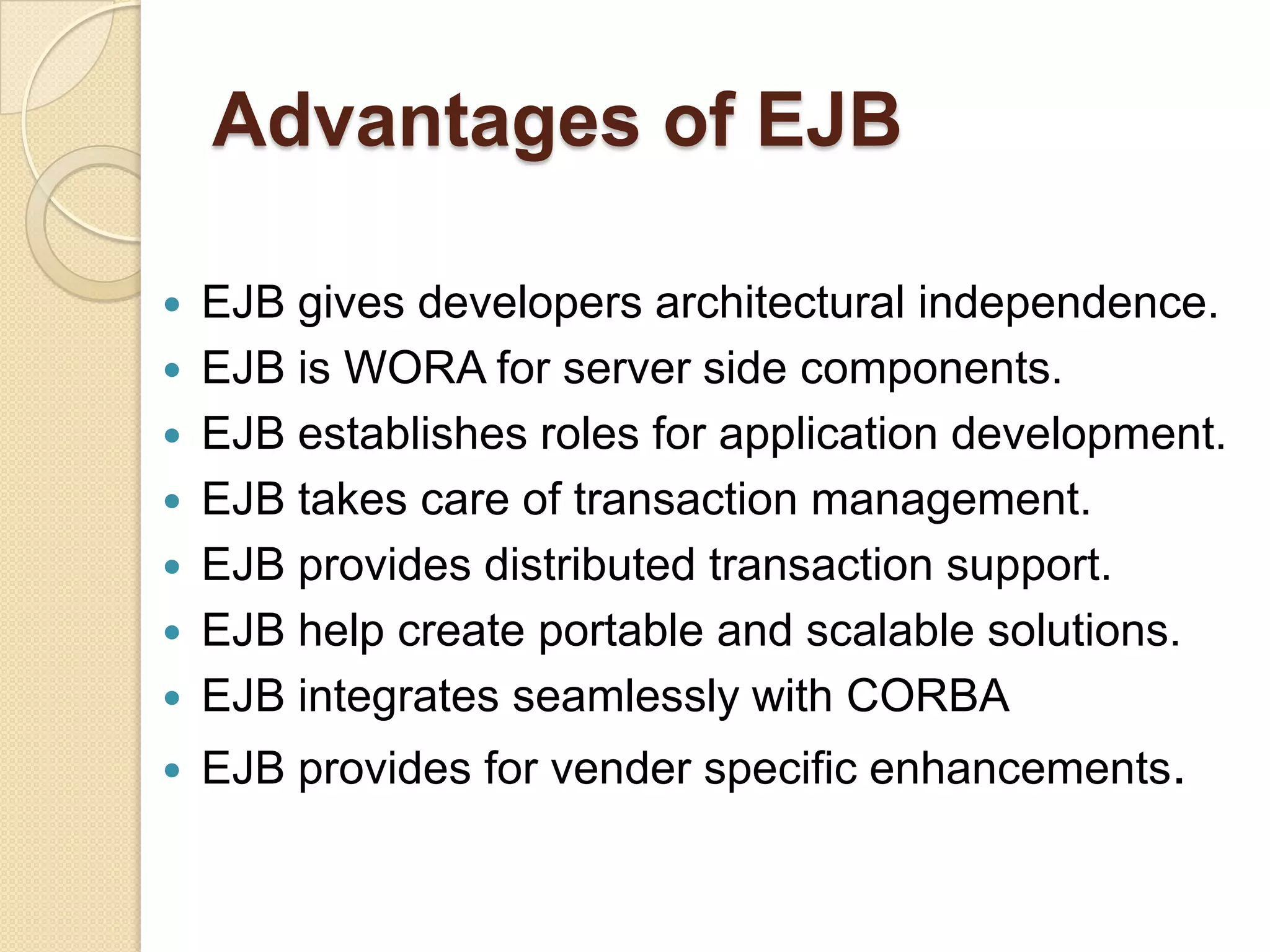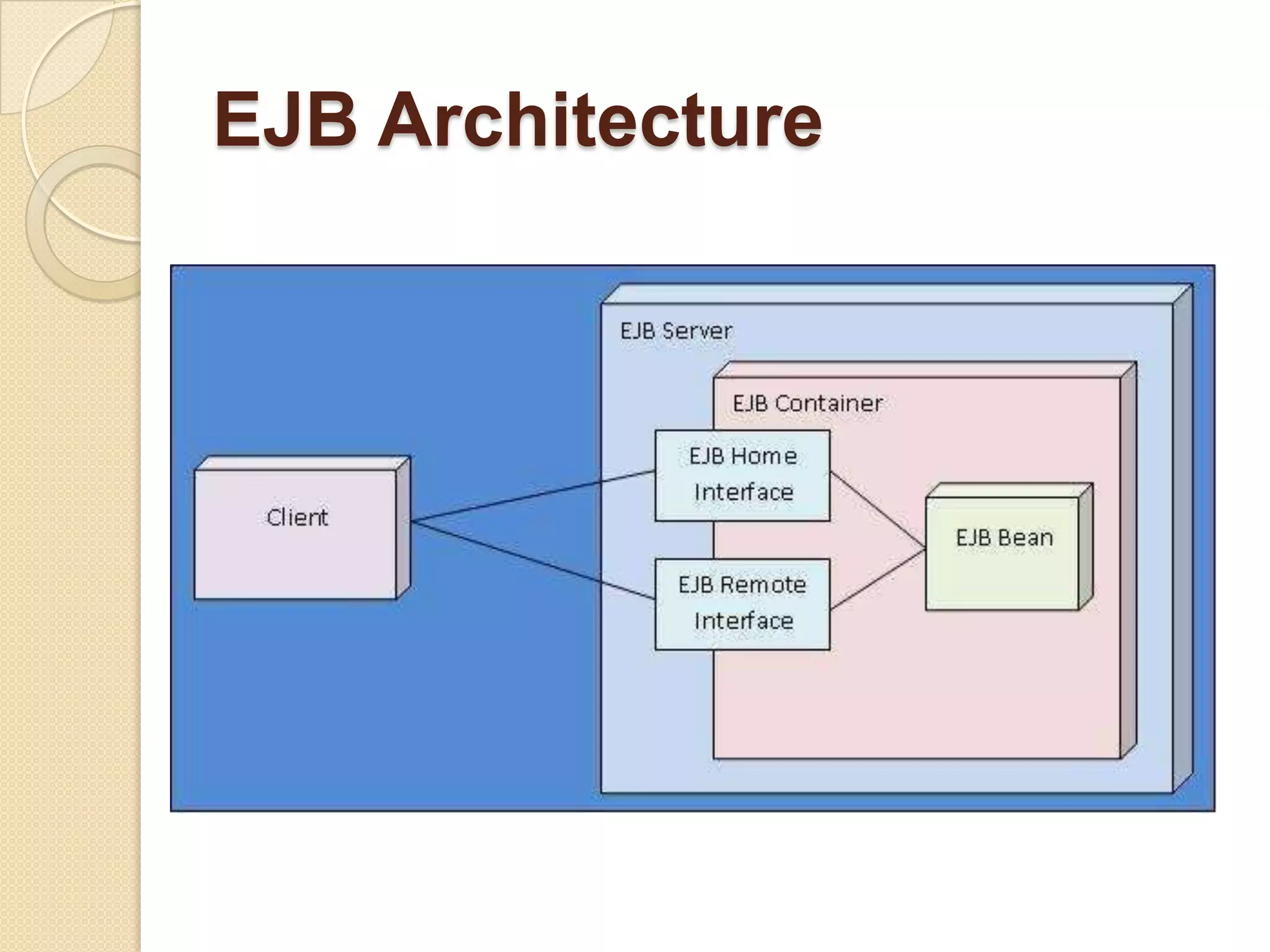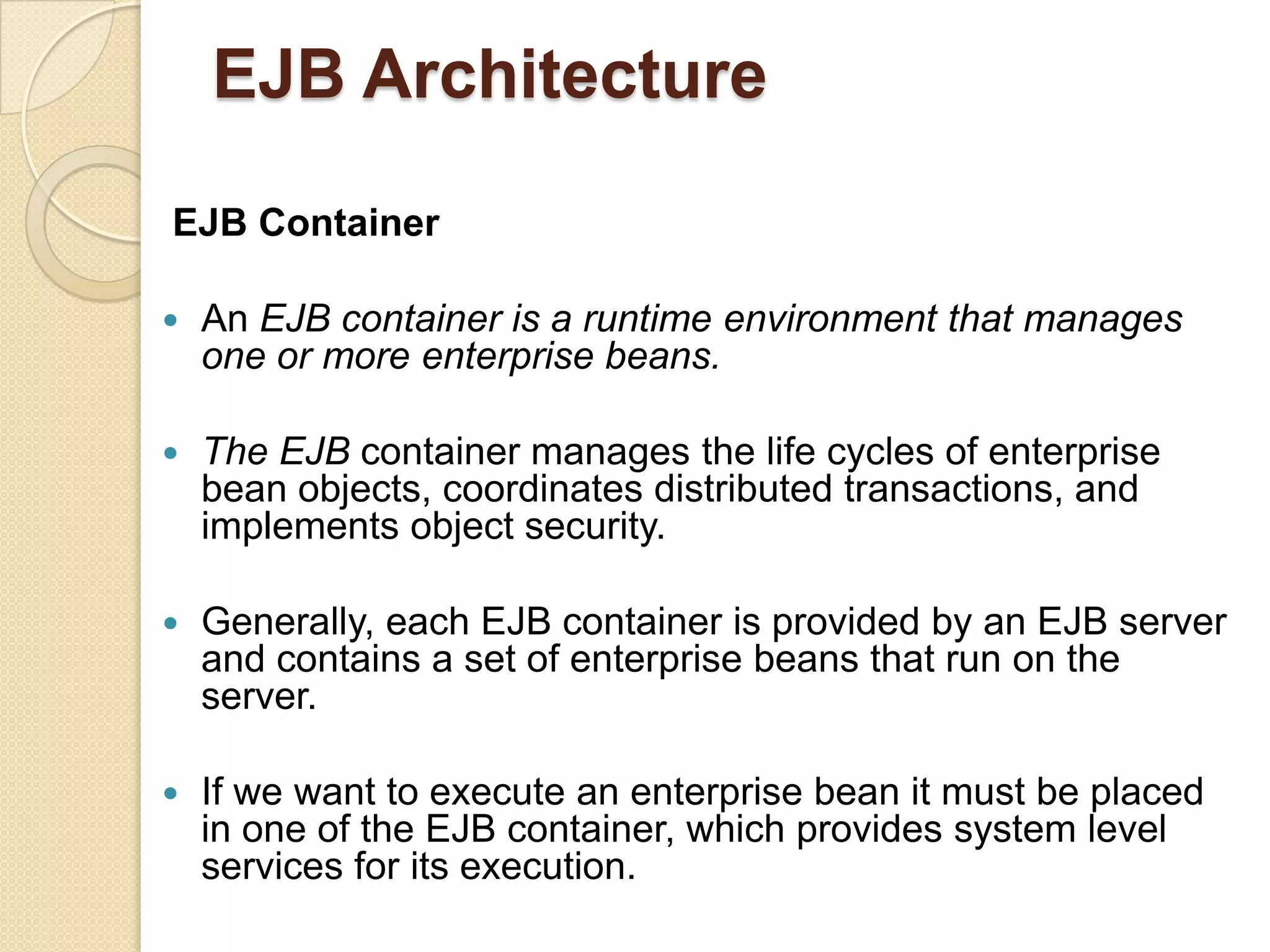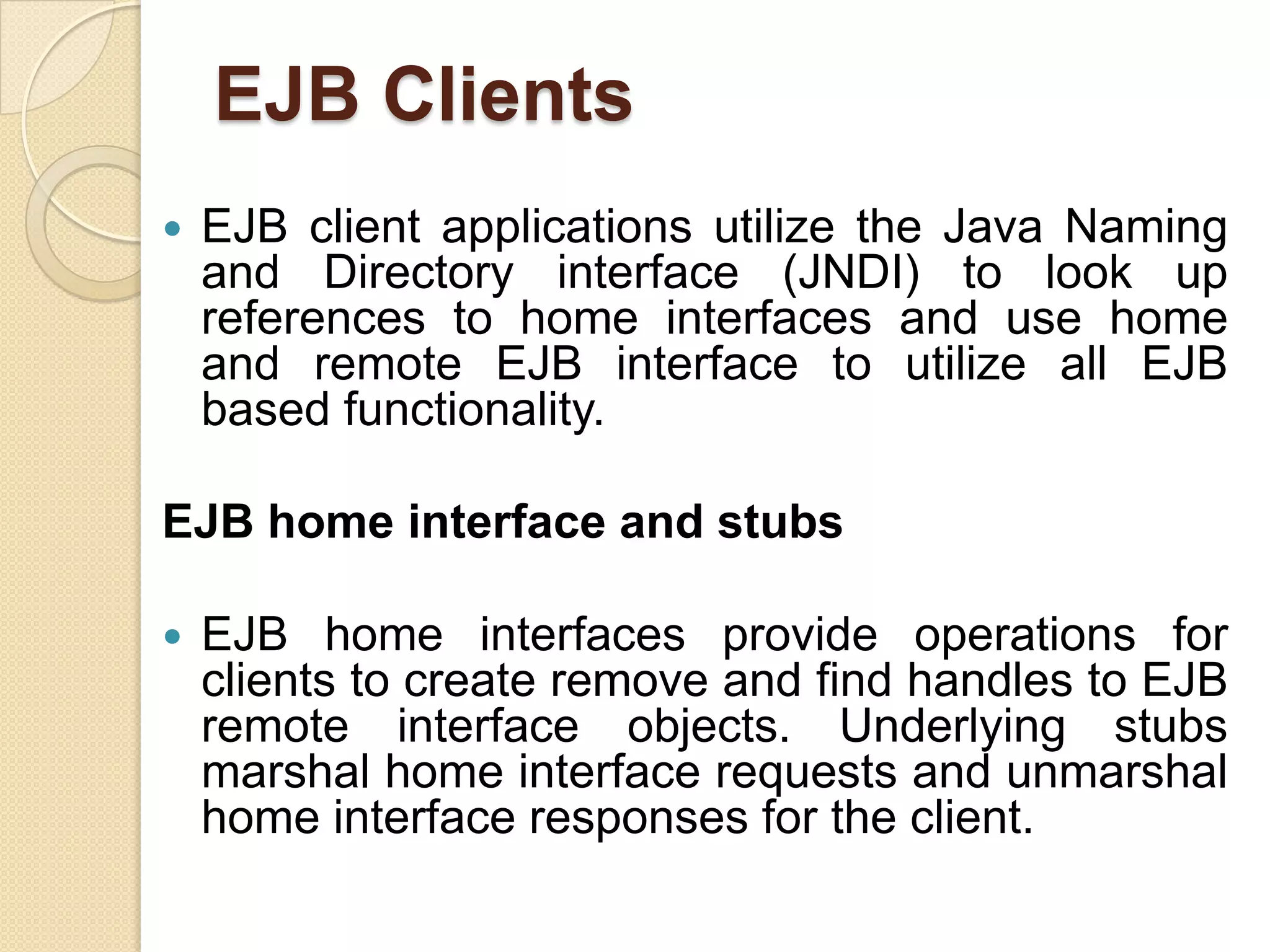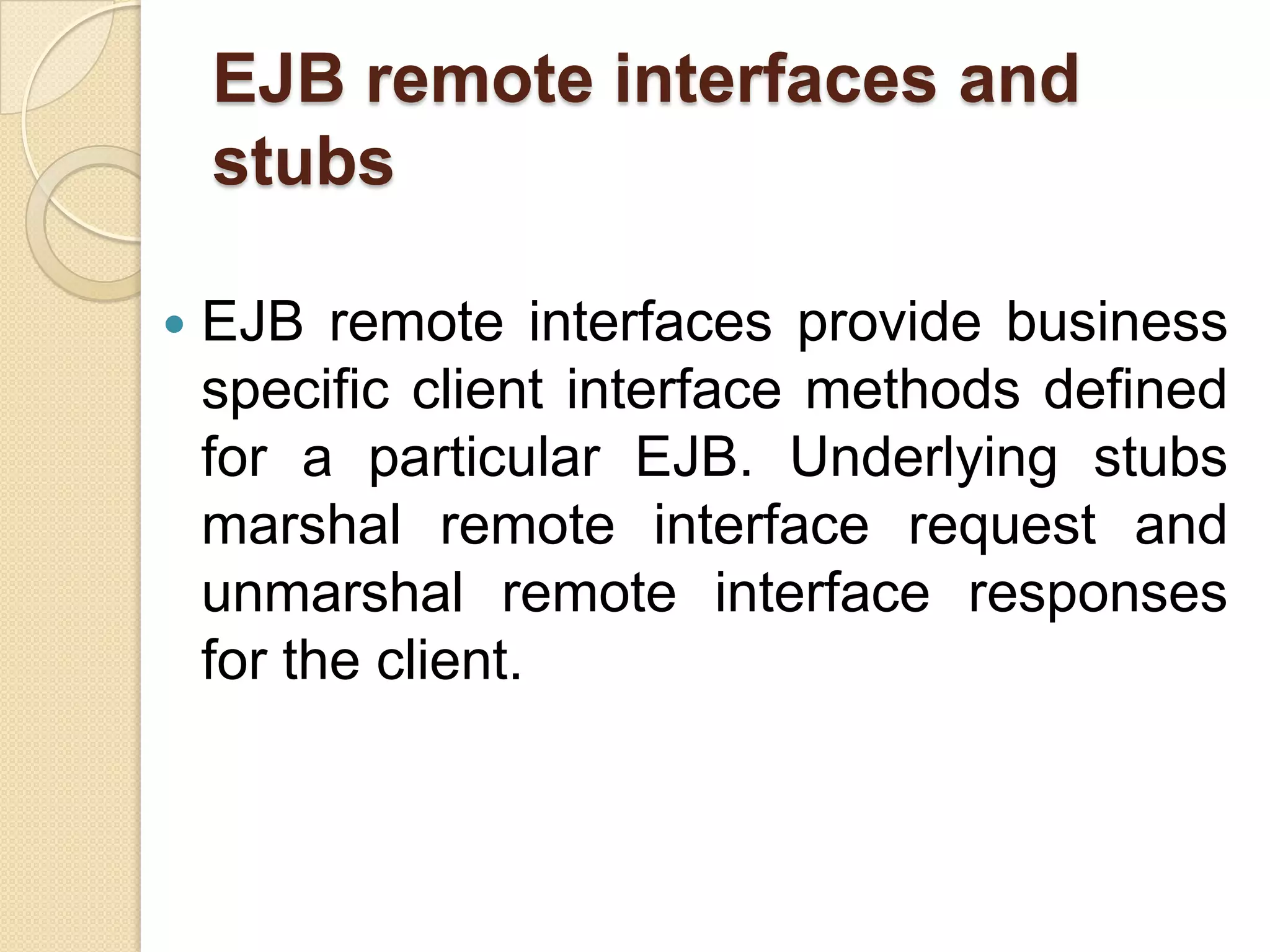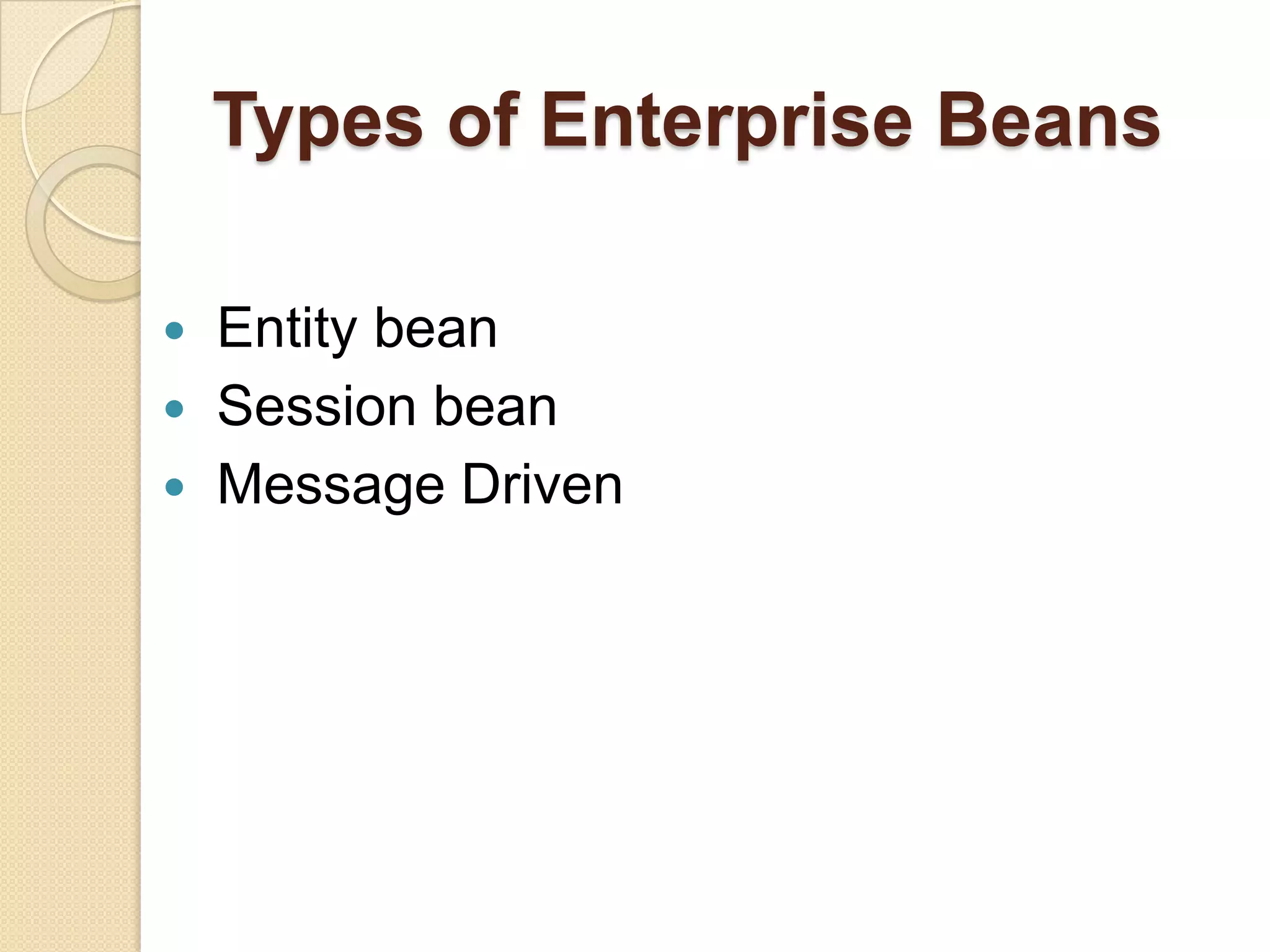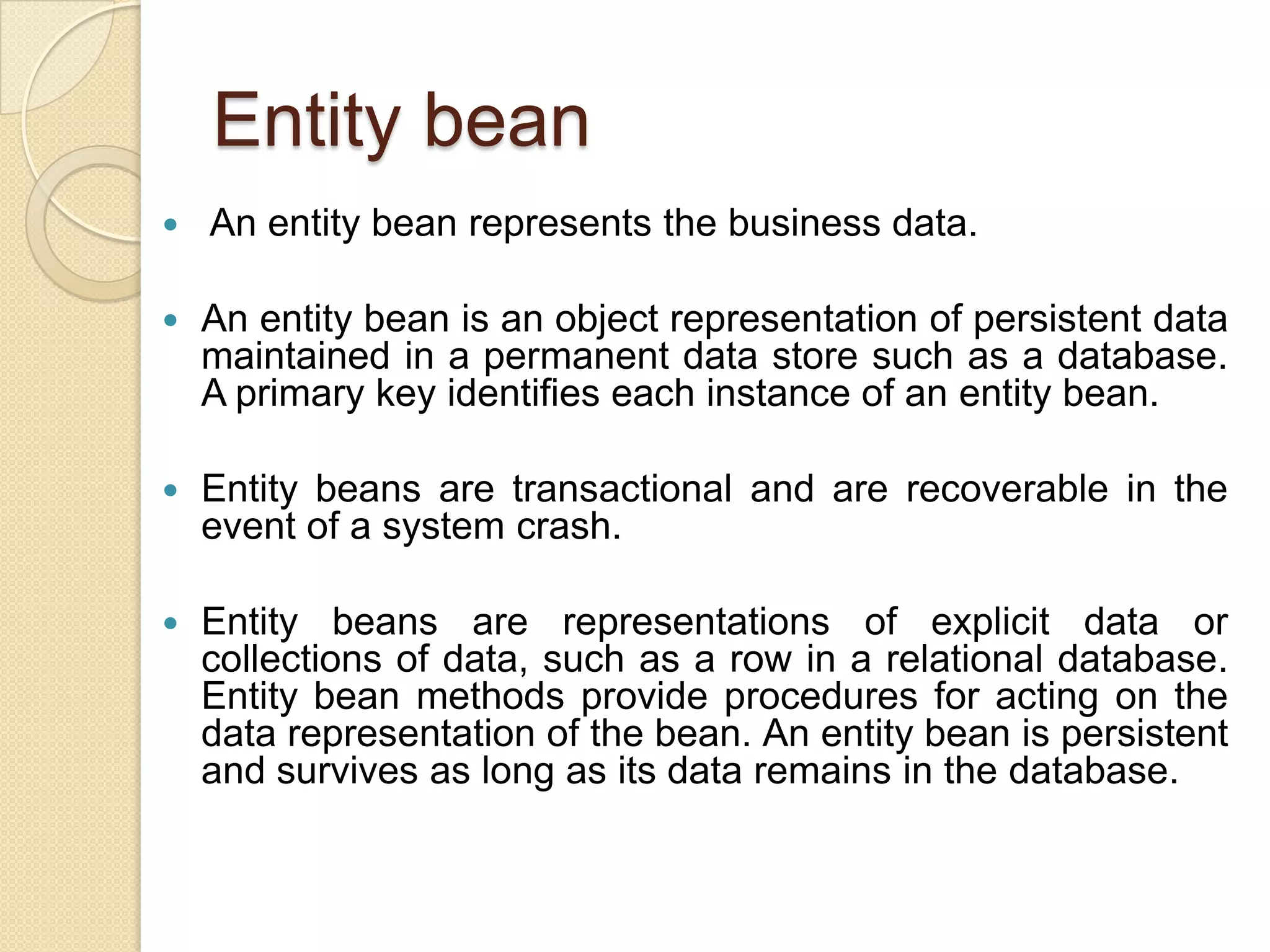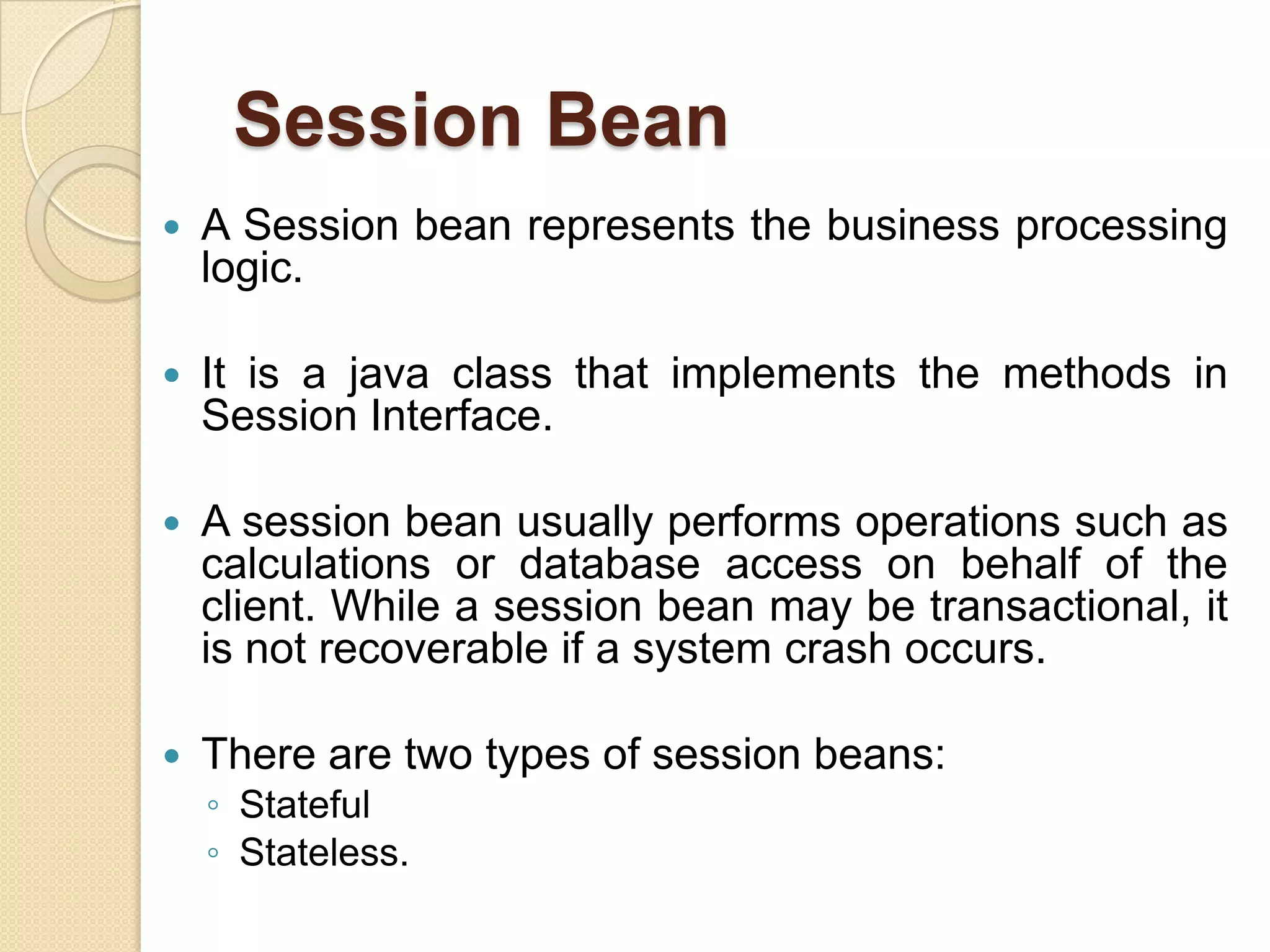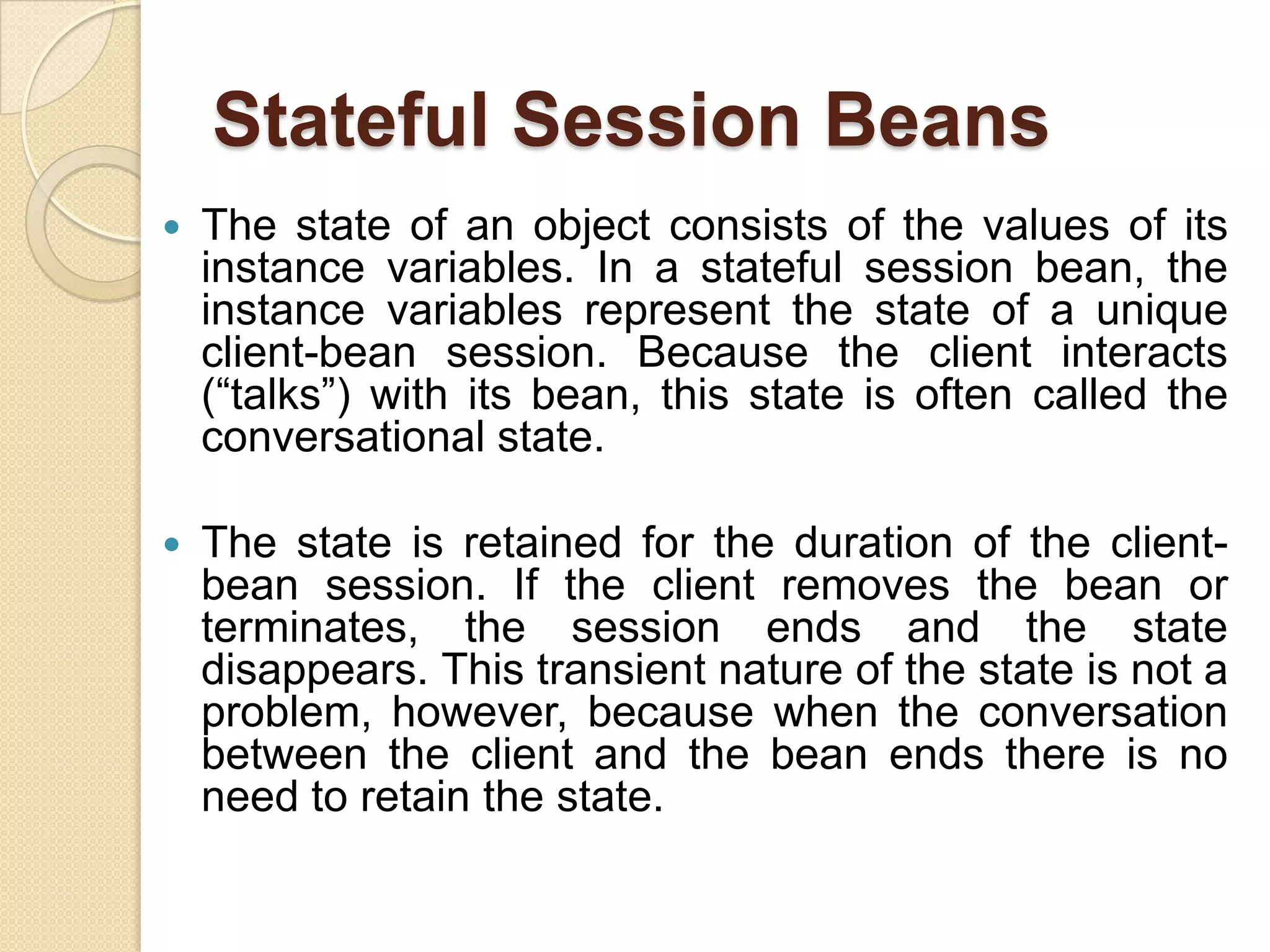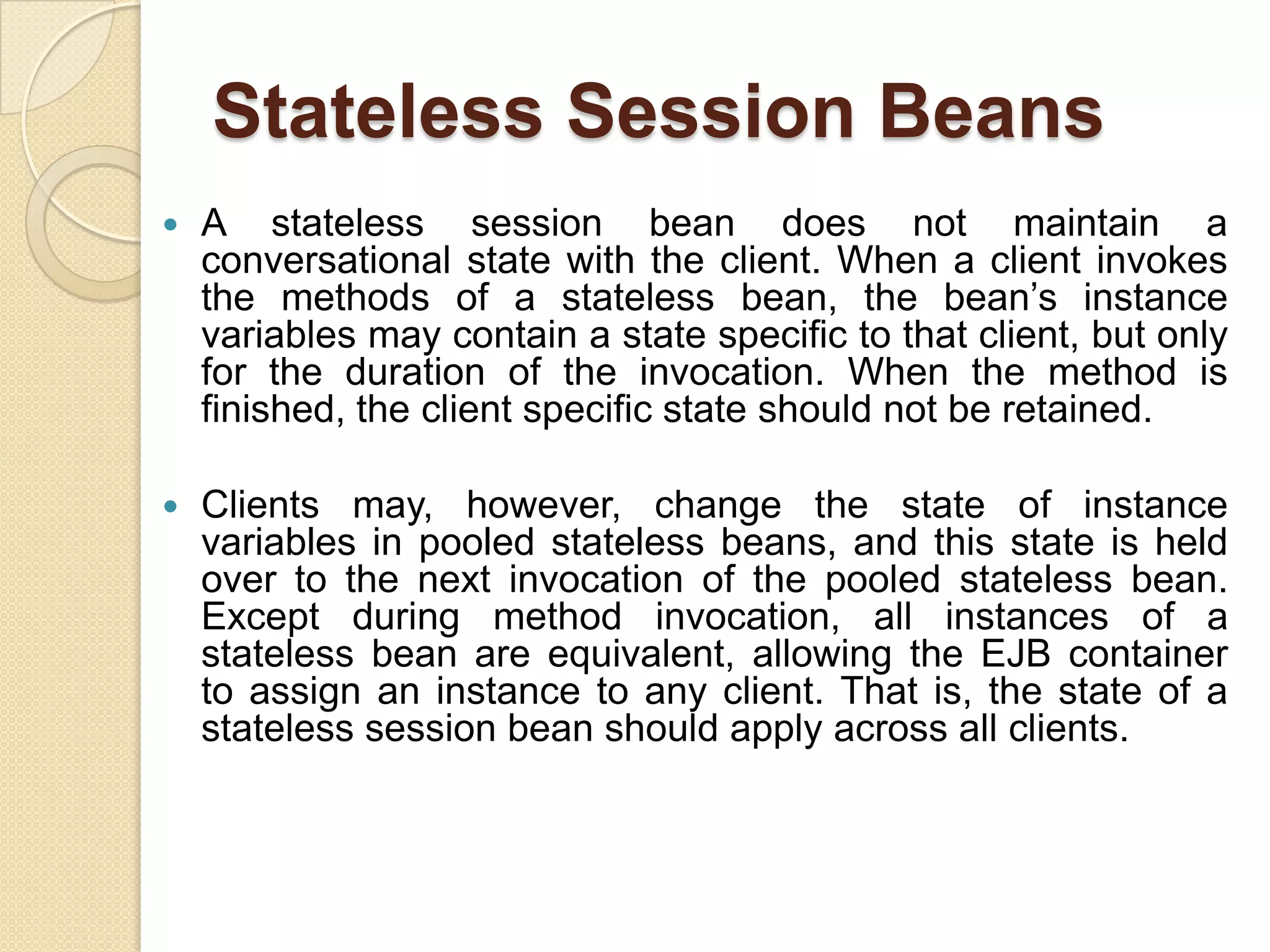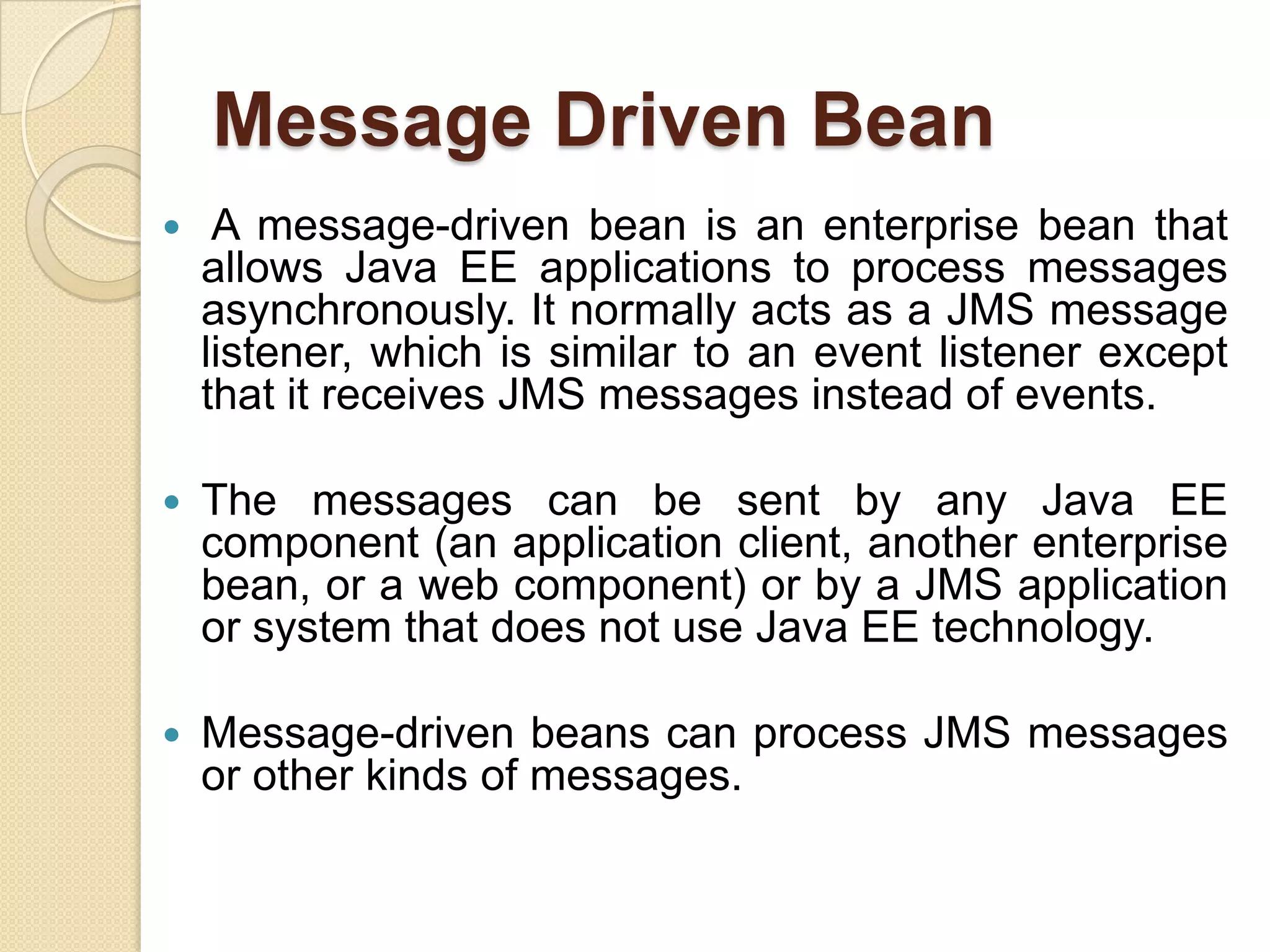This document discusses Java beans and Enterprise Java Beans (EJB). It defines a Java bean as a reusable software component that can be visually manipulated in builder tools. The primary goal of Java beans is to be write once and run anywhere (WORA). EJBs are server-side components that enable rapid development of distributed, transactional, and secure applications. EJBs provide features like transaction management, distributed transaction support, and portability. The document outlines the EJB architecture including EJB containers, clients, interfaces, stubs, and the different types of enterprise beans - entity beans, session beans, and message-driven beans.
